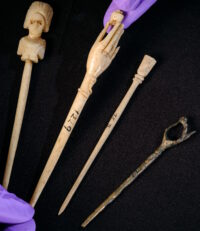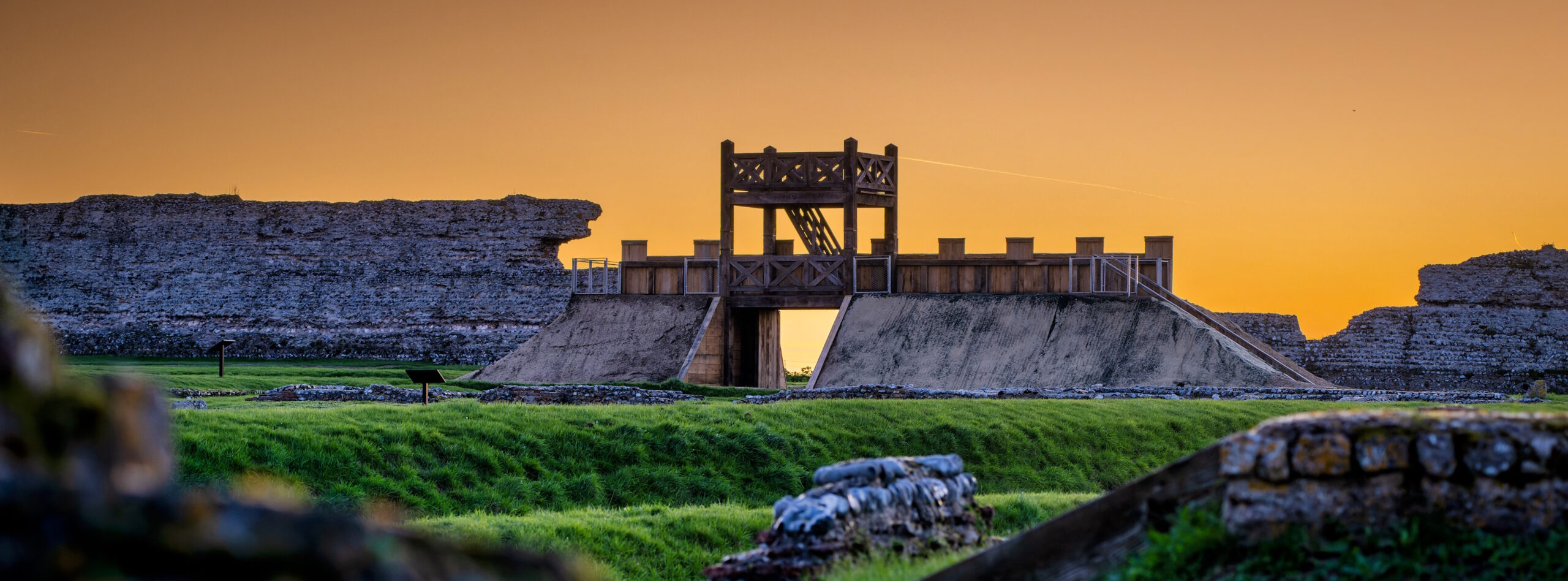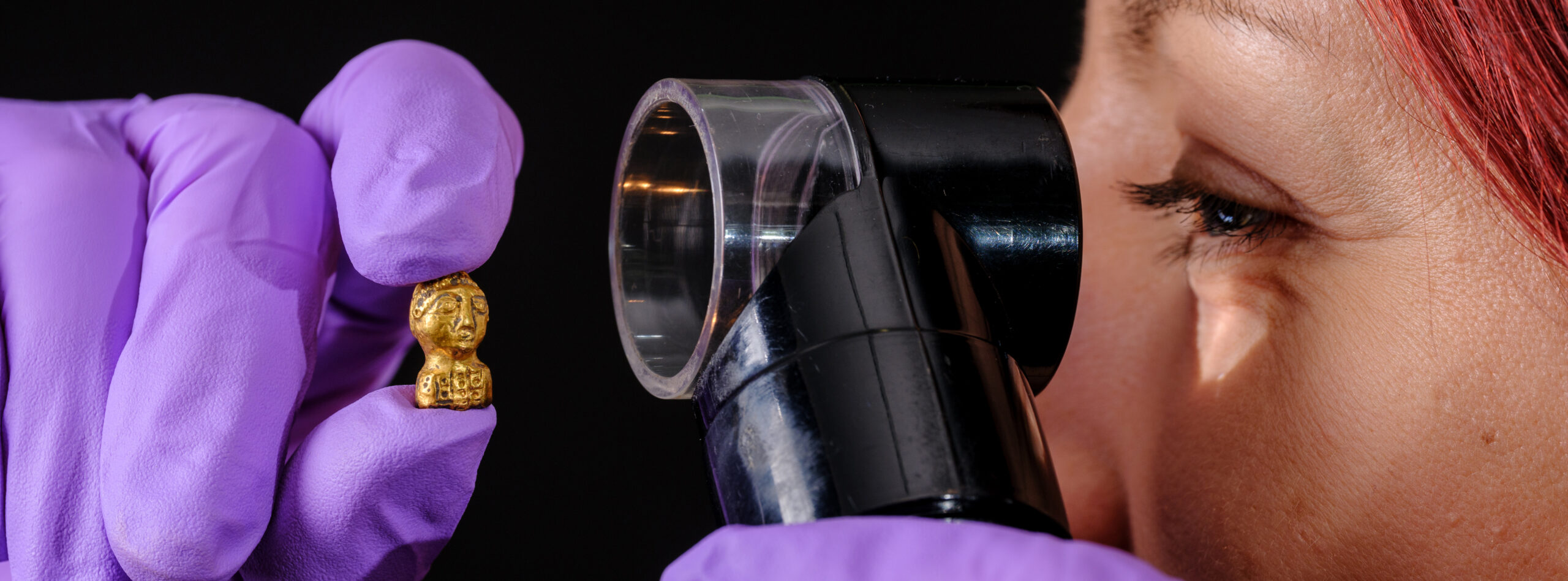A Roman wooden gateway and rampart has been reconstructed at Richborough Roman Fort, the site where the invading Roman legions first landed in Britain in 43 A.D. The gateway is 26 feet high and was constructed using period-accurate materials and techniques.
The new gateway has been constructed in oak, using Roman-style dovetail, lap and scarf joints. The tower takes inspiration from depictions of Roman fortifications on Trajan’s Column in Rome, including the crenelated parapet with its frame of timber uprights connected to rails, to which vertical boards are nailed, using hand-made iron nails similar to Roman types.
 An invasion force 40,000 strong landed in England in 43 A.D. and quickly took control of the southeast of the country. Richborough was strategically located on an island in the Wantsum Channel, and the high gateway gave troops a wide view of any potential threats to the Roman ships there.
An invasion force 40,000 strong landed in England in 43 A.D. and quickly took control of the southeast of the country. Richborough was strategically located on an island in the Wantsum Channel, and the high gateway gave troops a wide view of any potential threats to the Roman ships there.
The remains of Richborough Roman Fort and Amphitheatre in Kent were first explored by archaeologists in the 1920s. They found the remains of a fort where the soldiers, animals and supplies unloaded from Rome’s ships were housed, but it was only in 2021 when archaeologists unearthed the postholes that once held the massive timber supports of the gateway and guard tower. The evidence of the postholes allowed English Heritage to rebuild the structure in the exact location where it was originally erected.
The new gateway is accompanied by a new museum exhibition featuring objects found at the site. Many of them have never been on display before. They cover the full Roman history of Richborough (Rutupiae to the Romans) which began as a stark invasion fort and grew into a large, prosperous fort town where imports from all over the empire first made landfall in Britain.
The collection of objects found at Richborough is one of the largest for any Roman site in the country, including an extraordinary 450 brooches, over 1,000 hairpins, and 56,000 coins. Alongside the surviving ruins of the later Roman fort, these objects add an invaluable insight into the people of Richborough. Individual items can be identified as belonging specifically to soldiers, farmers, officials, craftsmen, pagans, Christians, and women and men of all social classes, and there are even hints at individuals who travelled from other parts of the Empire, many from the areas of northern and eastern Europe as well as some from as far away as Byzantium in modern Turkey. A few of the rare treasures on display for the first time at the museum in Richborough are a 2000-year-old glass cup made from blown glass from the Middle East, a trader’s weight in the shape of Harpocrates, the god of silence, which is the only one of its kind in Britain, women’s hairpins, introduced by Romans as new fashions, including one design depicting a female head which appears at Richborough in three forms: a delicate gold example; a finely crafted version in bone imported from the Continent; and a simple local copy – suggesting the differences in wealth at the site, and finally statuettes of Roman gods which would have been present in shrines where worshippers presented offerings as gifts.


The galvanized chain link gates add a touch of something to the whole. Shame they didn’t have a couple cans of flat black spray paint to take the edge off a bit.
If Rutupiae was strategically located “on an island in the Wantsum Channel” that separated the isle of Thanet, and if already Caesar had landed in Pegwell Bay, “Portus Itius” might indeed have been what is now Wissant in France, today by the way an exceptionally cool windsurfing and kiting spot, though still littered with remnants of German WII bunkers (and sepia shells!).
30 roman miles = 44.4 km = 27.59 miles, and Caesar writes:
5.2 “..Conlaudatis militibus atque iis, qui negotio praefuerant, quid fieri velit, ostendit atque omnes ad portum Itium convenire iubet, quo ex portu commodissimum in Britanniam traiectum esse cognoverat, circiter milium passuum XXX transmissum a continenti…”
5.2 ..Having commended the soldiers and the workers, he informs them what he wishes to be done, and orders all the [600+28] ships to assemble at ‘port Itius’, from which port he had learned that the passage into Britain was shortest, only about thirty miles from the continent…